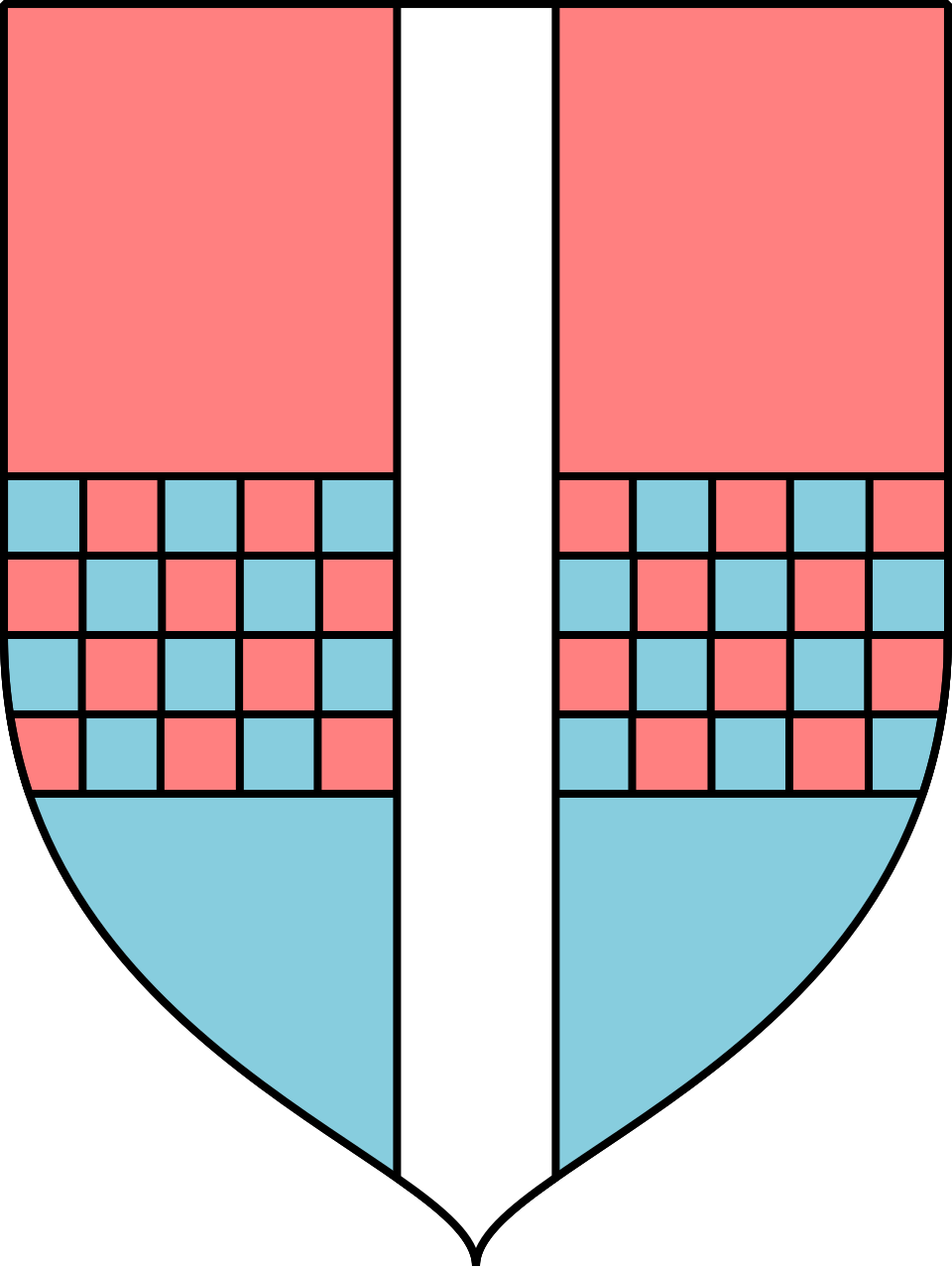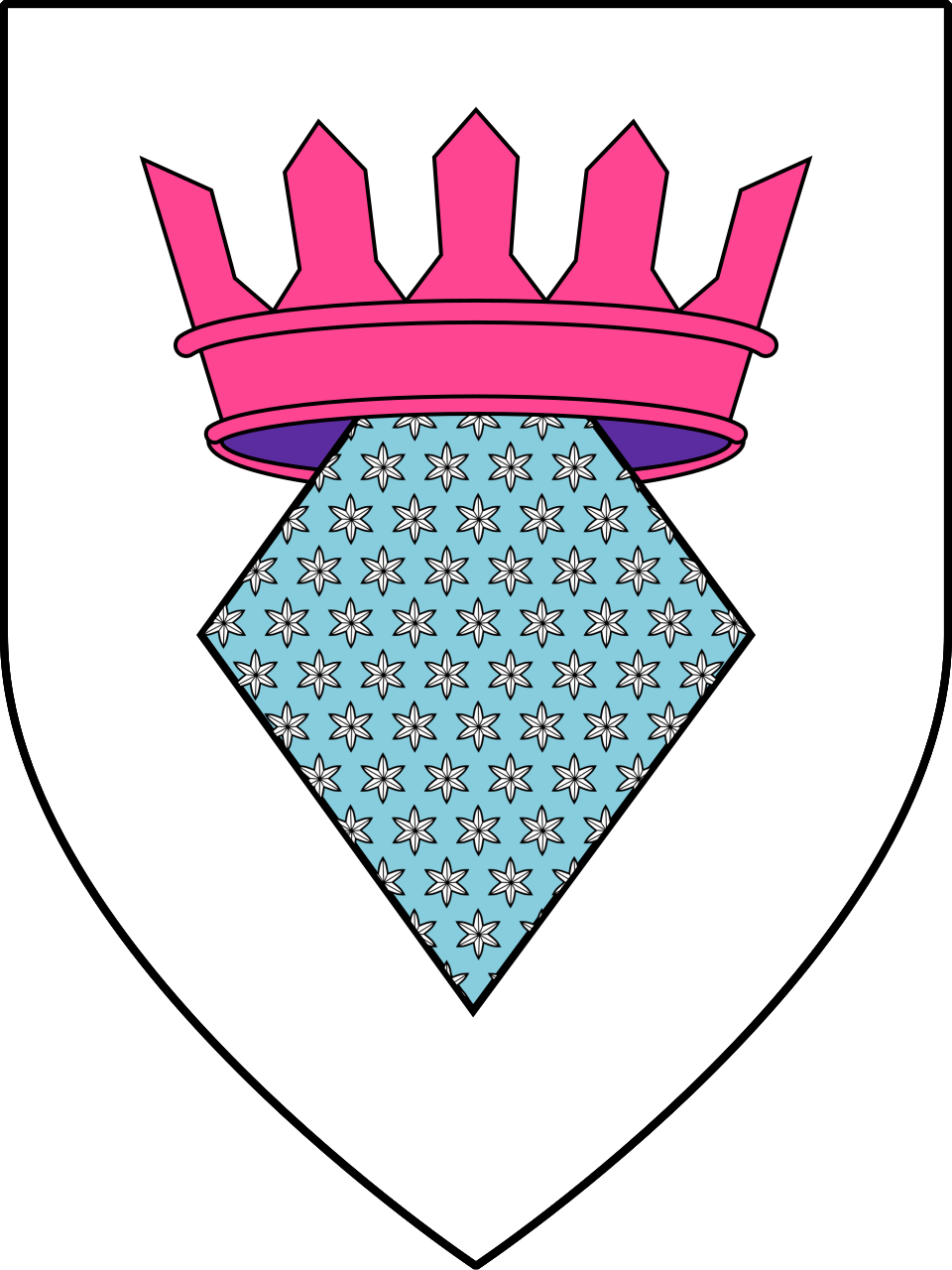Various designs, largely predating this blog and Mastodon, are receiving updates to their blazons due to a change of mind on my part. Early on I had the idea of sort of redeeming the heraldic stains; those tinctures often said (though rarely, if ever, used) to be part of the system of abatements. In fact the supposed purpose is, as has been observed before by learned scholars of heraldic custom and practice, a nonsense or, as one[^1] put it, “...one of those pleasant little insanities...”
The crux of the problem[^2][^3] with that system is that nobody is likely to display their disgrace and neither has it ever been meaningfully attempted[^2]. Since the use of stains is largely theoretical and, when a case can be made for their presence[^2], divorced of prescribed significance, there is little reason to undertake their reclamation!
A more compelling reason to review the idea is that the ACP project has revealed a new use case. Heraldic devices are used here in a fashion somewhat distinct from convention, being that they are intended for non-exclusive† display by any member of the community to whom a design applies. Pride Shields began and persist as devices alike to flags and banners in their messaging and, like those, have a place in protest.
As I've prepared some Protest Shield designs it has become apparent that the fanciful abatements have genuine utility in decrying the deplorable. Stains are central to the symbolism to be drawn upon. Abatements become, in the rolls of the Armorial College of Pride, meaningful and useful.
In order to preserve their traditional role in the new context their earlier employment will be struck from the rolls‡, the blazons rewritten to use other, more suitable terms. Luckily the heralds have, over the last few hundred years, introduced several tinctures not attested in the earlier volumes (including those detailing abatements.)
The two stains of particular interest here, and the colours that shall replace them, are tenné and murrey, to be replaced with brunâtre and fuchsia, respectively. Brunâtre[^4] is known in German heraldry but fuchsia[^5] is an invention of the necessity of different shades of true pinks for Pride Shields.
Some metals are also under consideration, because I think diversity of tincture is appropriate to ACP designs. Iron or steel is tempting. But it's a matter of how to convey them digitally as much as anything and I already have concerns about accessibility.
I would be interested in opinions, especially of other lgbtqia+ people with armigerous leanings.
† There may be exceptions in future.
‡ Alright, the posts. But I'm doing heraldry here so might as well use the terminology, right?
[^1] Arthur Charles Fox-Davies, A Complete Guide to Heraldry, T. C. & E. C. JACK, London, 1909, p.72.
[^2] Arthur Charles Fox-Davies, A Complete Guide to Heraldry, T. C. & E. C. JACK, London, 1909, p.73.
[^3] James Parker, A Glossary of Terms Used in Heraldry, James Parker and Co., Oxford & London, 1894, p.1.
[^4] Arthur Charles Fox-Davies, A Complete Guide to Heraldry, T. C. & E. C. JACK, London, 1909, p.72—76.
[^5] heraldicpride, A Brief Word on Tinctures, dotart.blog, 2023

